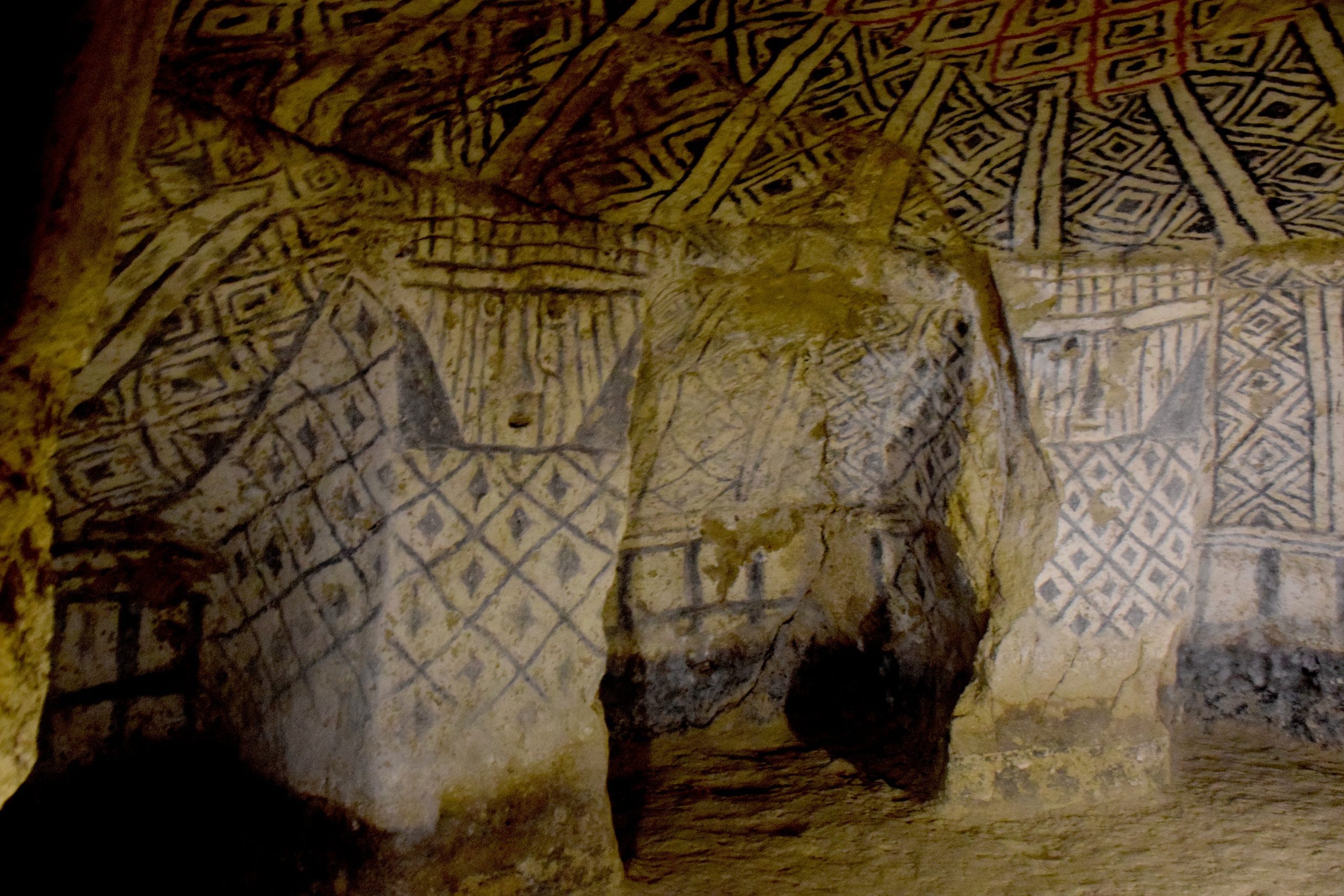Colombia is a large country of diverse attractions. The beaches of the Caribbean lowlands are attracting growing numbers of tourists and part-time residents to the modern high-rise apartment buildings growing along the coast. Coffee estates welcome visitors south of the modern city of Medellín. The city has become a talent center for musicians and fashion designers. Bogotá is the business center and the heart of historic Colombia. More than half the country lies in the Amazon region, a wilderness of colorful poison dart frogs and a birder’s paradise.
The southern highlands of Colombia hold the remains of a lost civilization and a place of miracles. The vast and sparsely populated area runs from south of Bogotá to the border with Ecuador, east to the edge of the Amazon, and west to the mountain range that separates the region from the coffee estates and Pacific lowlands. From the cities of Neiva to Pasto and the border there is one highway. While the area is safe for visitors, it is best traveled with a guide in a four-wheel-drive vehicle. Although the southern highlands are not on the itineraries of major tour companies, it is worth the effort to hire a guide and driver and enjoy the cool country, with few tourists, lush natural beauty and amazing sights.
In July 2015, CTH contracted with Kensington Tours to arrange the logistics for a week in the southern highlands of Colombia. Our guide Marino and driver Ricaute picked us up at the airport in Neiva for the drive to San Agustín and visits to the archaeological parks of San Agustín and Tierradentro. We stayed at the Akawanka Lodge in San Agustín, looking down on the colonial town, and at Hotel El Refugio, the only hotel in Parque Nacional Arqueológico Tierradentro.
Lodging is also available in home hospitality posadas within the park, where there is one bar, one restaurant, and a juice bar. On Saturday nights the town of San Adrés Pisimbalá, within the indigenous enclave of the park, comes alive with music. Ricaute55@hotmail.com
From Tierradentro we were deposited back in Neiva for the flight to Bogotá and from there to Pasto. Intra-country flights are still the best way to traverse the vast territory. Maria greeted us at the Pasto airport. She took us around the city, to her favorite bakery café, and to the Las Lajas Sanctuary outside of Ipiales, the place of miracles.
Monuments and Tombs of a Lost Civilization
At the headwaters of the Magdalena River that empties into the Caribbean Sea at Barranquilla, an unnamed civilization thrived from the 1st to the 9th century CE. Who they were, where they came from, and where they went is a mystery. In the 18th century a priest traveled the river territory and wrote a pamphlet titled The Wonders of the Amazon. He described large statues filled with gold. Treasure seekers came to San Agustín where they broke apart solid stone carved statues looking in vain for gold. Then they plundered the tombs. Later adventurers climbed the hills at Tierradentro where they emptied tombs carved deep into the mountain. Steep stairs led down to vaults filled with gold and pottery containing the burnt remains of the high chiefs of the long gone culture.
Today gold objects from San Agustín and Tierradentro are in the Gold Museum in Bogotá. Carved stone tomb guardians from San Agustín are in museums around the world, although many have been returned to the park. Both San Agustín and Tierradentro were recognized as World Heritage Sites in 1995.
At San Agustín the park is a mile outside the colonial town. San Agustín is a town of 40,000 people, 120 of whom are employed as local guides. Of the 700 tomb guardians located in the area, 130 are within the archaeological park. All the statues face east.
Some of the statues are of animal effigies. Others are of fierce warriors bearing clubs. Most are carved only on the front, although some have capes carved down the back. A small and unique carving is that of joined monkeys, male on one side and female on the other.
A few miles from the main park is Alto de los Idolos. This is the site where kings were buried. Across a wide expanse of grass are tomb guardians and the excavated tomb holding a cracked sarcophagus, hastily opened by tomb raiders and left in situ.
Within the archaeological park at Tierradentro there are 200 tombs in clusters on the tops of a group of mountain peaks. Only 50 of the tombs have been excavated. Of those, 29 are located in one cluster at a hilltop identified as the Segovia site.
A locked gate covers each excavated tomb. The gates are for safety as much as security. Steep stairs cut in the rock lead down into each tomb. Although most tombs have been emptied of grave goods and the clay jars of burnt human remains, decorations on the walls remain. Instead of stone statues guarding the tombs, fierce faces were carved into pillars within the tomb, which were then painted.
Recently, a delegation of French diplomats landed in a helicopter in a visit to the Segovia site. Everyone else reaches the site by a short but steep climb up the mountain. Donkeys can be rented to carry visitors up the mountain. Climbing down into the tombs is an individual pursuit, although the site guide will often lend a helpful shoulder to lean on during the descent into the world of this rich, unnamed, and lost civilization.
Miracles of the Las Lajas Sanctuary
On the southern border of Colombia is the small town of Ipiales, home to a pilgrimage site for Colombians and Ecuadorians. At this place in 1754, a mother and her deaf-mute daughter sought refuge from a storm among the rock outcroppings of a steep-walled river canyon. The daughter yelled out to her mother that Mestiza is calling me. The mother was as surprised by the miracle of her daughter’s speech as she was by the vision of the Virgin Mary in the wall of rock, illuminated by intermittent bursts of lightening.
A straw and wood shrine was quickly built to enclose the image on the rock. In 1802 a large adobe church was erected in place of the shrine. A bridge was built across the canyon and roads were cut to enable pilgrims to easily visit the site. In 1916 the Gothic Revival church was begun. The church seen today was completed in 1949. All structures at the site preserved the rock vision as the back of the altar. A small model of the 1802 church can be seen along the path down to the cathedral, among the many wall-plagues cemented on the canyon walls to pay tribute to the miracle of Las Lajas.
The current sanctuary was funded by donations sought in Ecuador by a man who credits the Virgin of Las Lajas with the miracle of his restored hearing. A statue commemorating this miracle and the funding of the church is located along the path from the main street down to the cathedral. Food vendors on the path sell local favorites including cheese stuffed plantain and roasted guinea pig, locally known as cuy.
Each year during holy week, over 1,000 people from Pasto walk to the Las Lajas Sanctuary. Pilgrims from Ecuador walk north to join the celebration. The walk takes about 24 hours. During this event soldiers line the road to exclude all but walkers and bicyclists from the road.
In 1952 the Vatican recognized the special status of the image of the Virgin at the sanctuary. Our Lady of Las Lajas was honored in a Canonical Coronation to venerate the local Christian icon. Papal recognition is joined by hundreds of testaments from the faithful cemented to the wall of the canyon down the length of the entry path. A visit to the Las Lajas Sanctuary is an experience in inspiration and hope.
A week in the southern highlands of Colombia was just enough time to enjoy sites of lost civilizations and miracles of healing. Indigenous people migrating to the area after the end of the first millennium of the current era have intertwined with 18th century Spanish soldiers and explorers to build Catholic communities independent of, yet reminiscent of, old Spain. For visitors southern Colombia is a magical place.
















